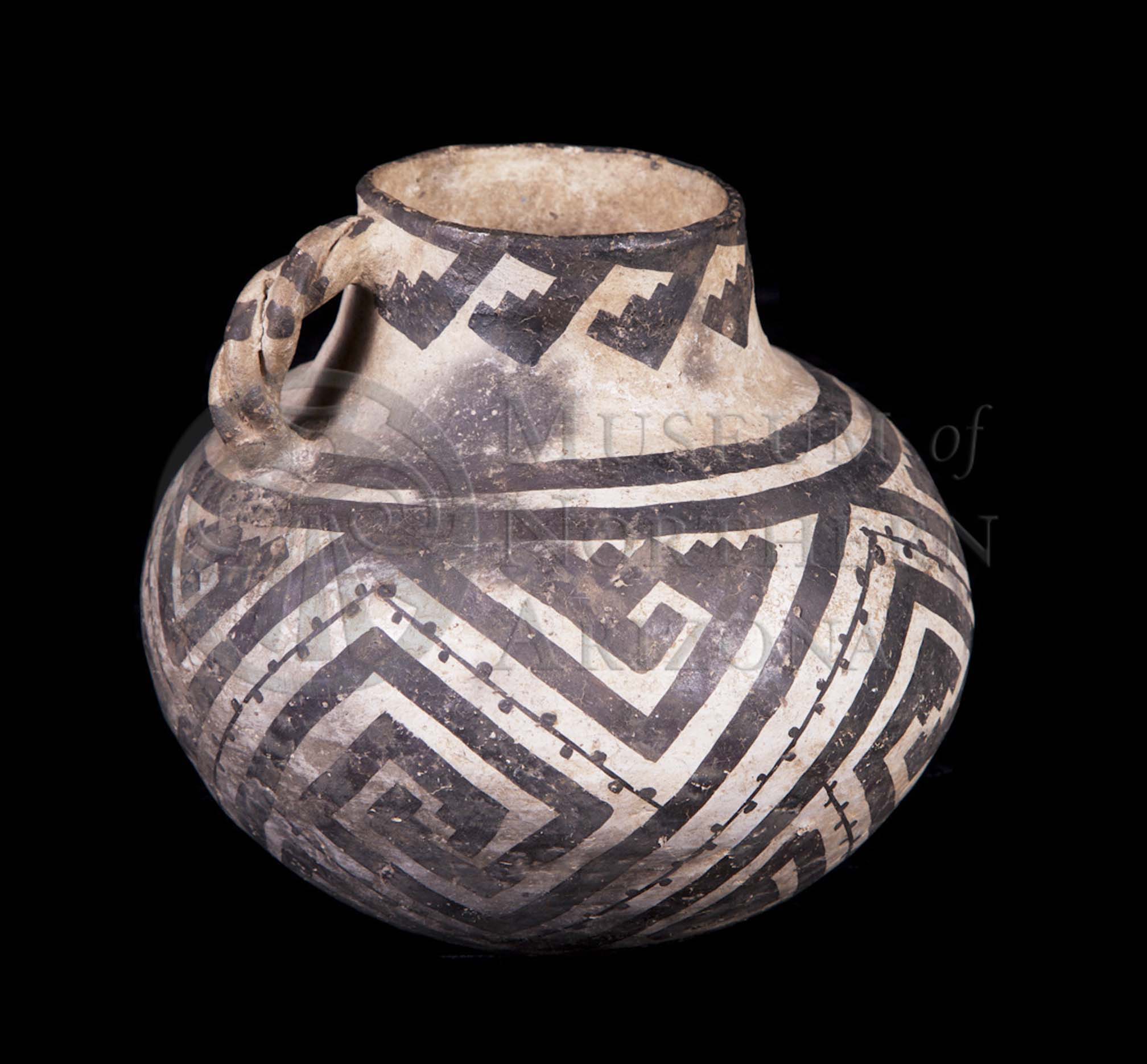
Snowflake Black-on-white pitcher from the Museum of Northern Arizona collections. Click the image to open the Snowflake Black-on-white gallery.
Snowflake Black-on-white is type of Cibola White Ware commonly employing stepped elements in rectilinear designs.
Archaeological Culture: Ancestral Puebloan
Date Range: ca. A.D. 1100-1275.
Construction: By coiling.
Firing: In a neutral to reducing atmosphere.
Core Color: Dark to light gray.
Carbon Streak: Occasional.
Temper: Fine crushed sherd and/or fine sand.
Surface Finish: White slipped and unslipped; well-polished.
Surface Color: White to light gray.
Forms: Jars, seed jars; bowls relatively rare.
Decoration:
- Paint: Black.
- Pigments: Mineral, occasionally mixed with some organics.
- Design: Solid bold lines; interlocking rectangular scrolls; stepped sides, not barbed; lacks hatching.
Comparisons: Similar to Escavada Black-on-white, but has stepped sides rather than barbed; Reserve Black-on-white is also similar, but has hatched elements; Roosevelt Black-on-white designs are more elaborate; occasionally similar to Sosi Black-on-white, which has carbon-based paint.
Compiled from the following sources:
Zedeño, María Nieves. (1994) Sourcing Prehistoric Ceramics at Chodistaas Pueblo, Arizona: The Circulation of People and Pots in the Grasshopper Region. Anthropological Papers No. 58, University of Arizona Press, Tucson.
Compiled by:
Meghann M. Vance, Northern Arizona University Anthropology Laboratories.
